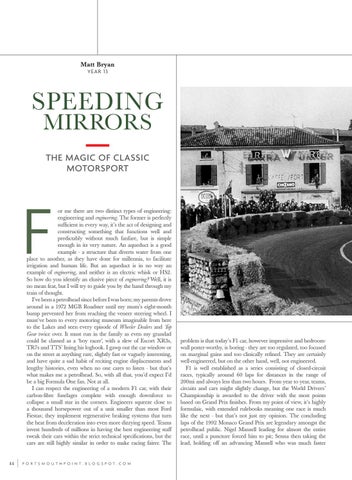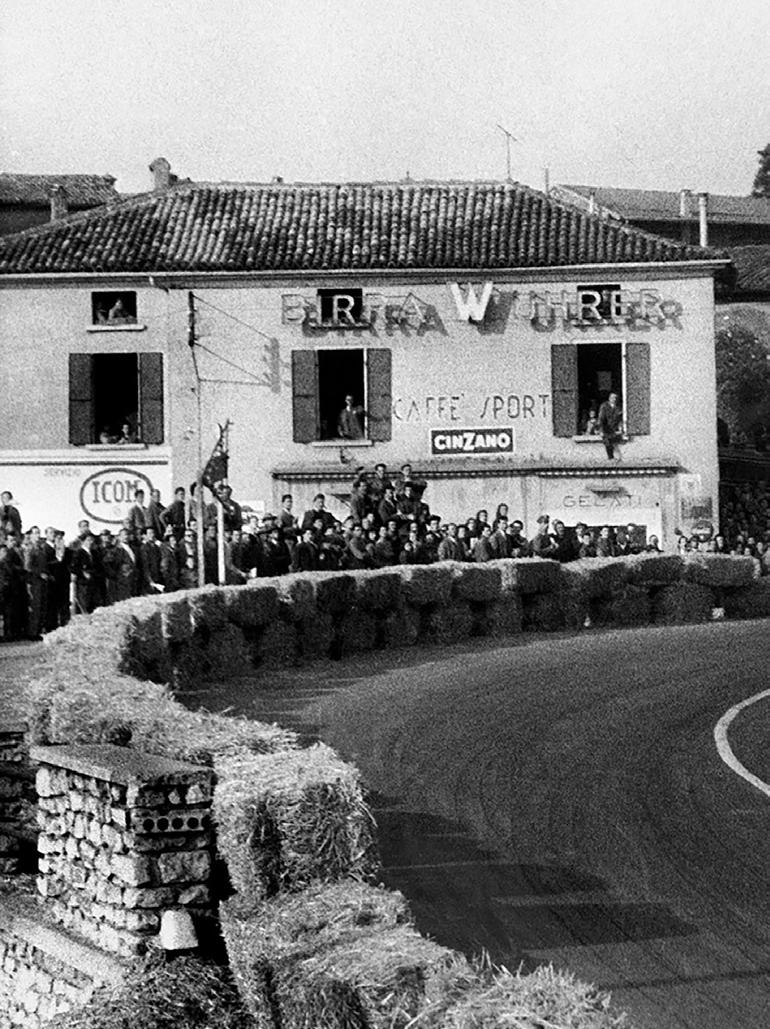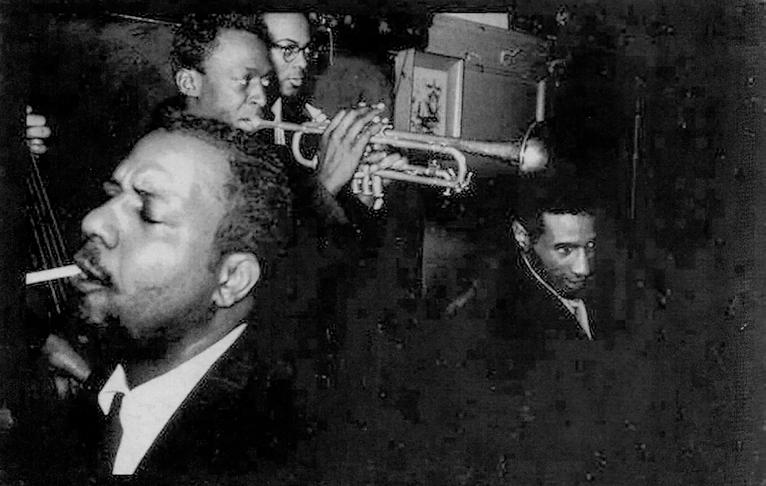Matt Bryan YE AR 13
SPEEDING MIRRORS THE MAGIC OF CLASSIC MOTORSPORT
F
or me there are two distinct types of engineering: engineering and engineering. The former is perfectly sufficient in every way, it’s the act of designing and constructing something that functions well and predictably without much fanfare, but is simple enough in its very nature. An aqueduct is a good example - a structure that diverts water from one place to another, as they have done for millennia, to facilitate irrigation and human life. But an aqueduct is in no way an example of engineering, and neither is an electric whisk or HS2. So how do you identify an elusive piece of engineering? Well, it is no mean feat, but I will try to guide you by the hand through my train of thought. I’ve been a petrolhead since before I was born; my parents drove around in a 1972 MGB Roadster until my mum’s eight-month bump prevented her from reaching the veneer steering wheel. I must’ve been to every motoring museum imaginable from here to the Lakes and seen every episode of Wheeler Dealers and Top Gear twice over. It must run in the family as even my grandad could be classed as a ‘boy racer’, with a slew of Escort XR3s, TR7s and TTS’ lining his logbook. I gawp out the car window or on the street at anything rare, slightly fast or vaguely interesting, and have quite a sad habit of reciting engine displacements and lengthy histories, even when no one cares to listen - but that’s what makes me a petrolhead. So, with all that, you’d expect I’d be a big Formula One fan. Not at all. I can respect the engineering of a modern F1 car, with their carbon-fibre fuselages complete with enough downforce to collapse a small star in the corners. Engineers squeeze close to a thousand horsepower out of a unit smaller than most Ford Fiestas; they implement regenerative braking systems that turn the heat from deceleration into even more dizzying speed. Teams invest hundreds of millions in having the best engineering staff tweak their cars within the strict technical specifications, but the cars are still highly similar in order to make racing fairer. The
44
P O RT S M O U T H P O I N T. B LO G S P OT.CO M
problem is that today’s F1 car, however impressive and bedroomwall poster-worthy, is boring - they are too regulated, too focused on marginal gains and too clinically refined. They are certainly well-engineered, but on the other hand, well, not engineered. F1 is well established as a series consisting of closed-circuit races, typically around 60 laps for distances in the range of 200mi and always less than two hours. From year to year, teams, circuits and cars might slightly change, but the World Drivers’ Championship is awarded to the driver with the most points based on Grand Prix finishes. From my point of view, it’s highly formulaic, with extended rulebooks meaning one race is much like the next - but that’s not just my opinion. The concluding laps of the 1992 Monaco Grand Prix are legendary amongst the petrolhead public. Nigel Mansell leading for almost the entire race, until a puncture forced him to pit; Senna then taking the lead, holding off an advancing Mansell who was much faster



























